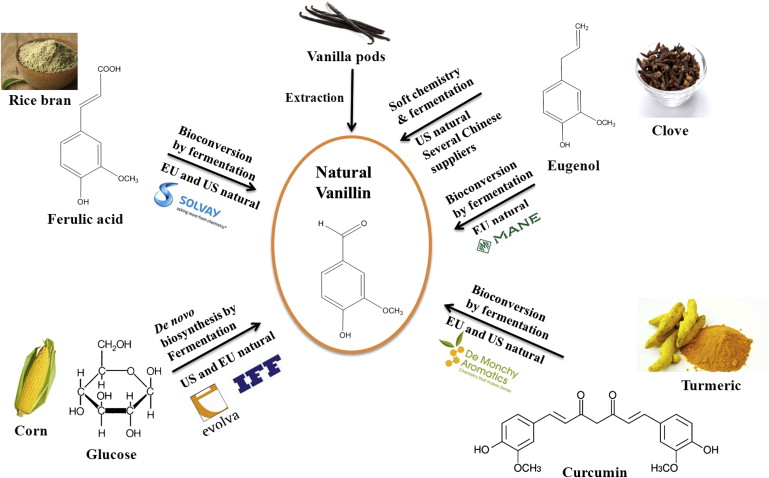HL》바니라》개요, 역사, 산지, 재배, 특징, 공정, 등급, 성분, 이용, 규격
바닐라의 향기성분
- 향의 종류 및 활용
- 과일의 향기성분
- 두리안, 딸기
- 채소 : 십자화과(겨자,와사비 ...)의 글루코시놀레이트
- 채소 : 부추속(파, 마늘, 양파 .. )의 황함유 물질
- 와인 향기성분
- 커피 향기성분, 홍차
- 꽃의 향기성분, 바닐라
- 밤꽃, 은행 ...
The fermented fruit contains about 2% vanillin; in vanilla pods of good quality, the crystallised vanillin is visible on the surface. Although vanillin dominates the aroma, many other compounds do significantly improve the taste; among these are p-hydroxy-benzaldehyd (0.2%), p-hydroxybenzyl methyl ether, (0.02%) and about 130 more compounds (phenoles, phenol ether, alcohols, carbonyl compounds, acids, ester, lactones, aliphatic and aromatic carbon hydrates and heterocyclic compounds). Two stereoisomeric vitispiranes (2,10,10-trimethyl-1,6- and methylidene-1-oxaspiro(4,5)dec-7-ene), although only occurring in traces, also influence the aroma.
The quite different fragrance of Tahiti vanilla is due to its additional contents of piperonal (heliotropin, 3,4-dioxymethylenbenzaldehyd) and diacetyl (butandione).
